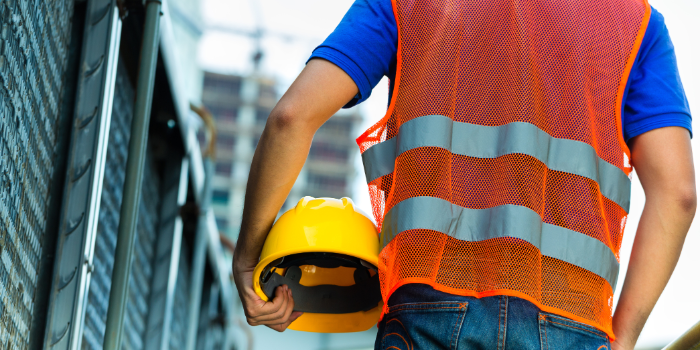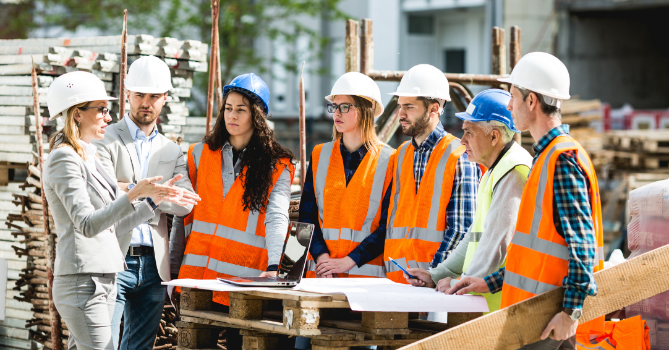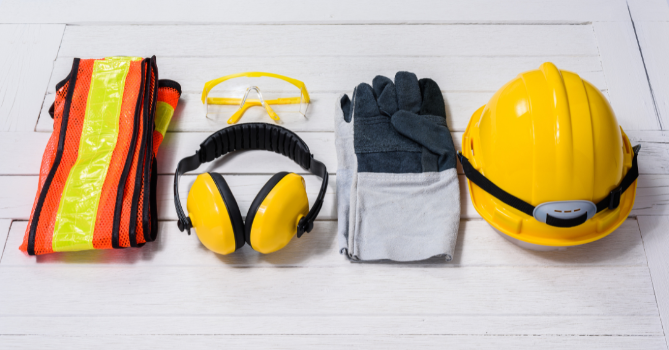
Prioritizing Worker Safety: A Comprehensive Guide for Construction Companies
Welcome to our blog on construction site safety! In this article, we'll explore the important issue of safety on construction sites and discuss why it matters to everyone involved.
Construction sites can be dangerous places, with various hazards that pose risks to workers' safety. From falls and machinery accidents to electrical hazards and hazardous materials, there are many factors that can lead to injuries or even fatalities on construction sites.
Ensuring safety on construction sites is not just a legal requirement – it's also a moral obligation. Every worker deserves to go home safely at the end of the day, and every employer has a responsibility to provide a safe working environment.
In this blog, we'll discuss the challenges of construction site safety, explore the importance of investing in safety measures, and share best practices for ensuring safety on construction sites. Let's dive in and learn how we can make construction sites safer for everyone.
Construction sites are bustling with activity, but they also present numerous safety challenges that must be addressed to ensure the well-being of workers. One of the most common hazards on construction sites is the risk of falls. Whether from elevated platforms, ladders, or scaffolding, falls can result in serious injuries or fatalities.
In addition to falls, construction sites also pose risks of being struck by objects or machinery. Workers may be hit by falling debris, tools, or vehicles, leading to severe injuries or even death. Electrical hazards are another significant concern on construction sites, with the potential for electrocution from exposed wiring or faulty equipment.
Moreover, construction sites often involve the use of heavy machinery and equipment, which can pose risks of accidents and injuries if not operated properly. Workers may also be exposed to hazardous materials such as asbestos, silica dust, or chemicals, leading to long-term health issues.
Furthermore, the fast-paced nature of construction projects can create pressure to cut corners on safety measures, increasing the likelihood of accidents and injuries. Tight deadlines, tight budgets, and a lack of proper training can all contribute to safety lapses on construction sites.
Overall, understanding the safety challenges on construction sites is crucial for developing effective safety protocols and preventing accidents. By identifying potential hazards and implementing appropriate safety measures, we can create safer working environments for construction workers and reduce the risk of injuries and fatalities.
Investing in safety measures on construction sites is not just a moral imperative – it's also a sound business decision. By prioritizing the safety and well-being of workers, construction companies can mitigate the risk of accidents and injuries, leading to improved productivity, lower insurance premiums, and enhanced reputation.
One of the most effective ways to invest in safety measures is through comprehensive training programs. Providing workers with proper training on safety protocols, equipment operation, and hazard recognition can empower them to make safer choices and respond effectively in emergency situations.

Additionally, investing in high-quality safety equipment and personal protective gear can significantly reduce the risk of injuries on construction sites. Helmets, safety glasses, gloves, and harnesses are just a few examples of essential safety gear that can protect workers from various hazards.
Furthermore, regular safety inspections and audits are essential for identifying potential hazards and ensuring compliance with safety regulations. By conducting thorough inspections of equipment, machinery, and worksites, companies can identify safety risks and take corrective action before accidents occur.
Moreover, investing in technology can also enhance safety on construction sites. From wearable devices that monitor workers' health and movements to drones that conduct site surveys and identify potential hazards, technology can play a vital role in improving safety outcomes.
Overall, investing in safety measures is an investment in the well-being of workers and the success of construction projects. By allocating resources to training, equipment, inspections, and technology, companies can create safer working environments and protect their most valuable asset – their employees.
Implementing best practices for ensuring safety on construction sites is essential for protecting workers and minimizing the risk of accidents. One of the most important practices is to establish clear safety protocols and procedures that are communicated to all workers. This includes identifying potential hazards, outlining safety measures, and providing training on how to mitigate risks.
Regular safety meetings and toolbox talks are another effective practice for promoting a culture of safety on construction sites. These meetings provide an opportunity for workers to discuss safety concerns, share experiences, and reinforce safety protocols.
Additionally, promoting accountability and responsibility for safety among all workers is crucial. Encouraging workers to speak up if they observe unsafe behavior or conditions, and empowering them to take action to address safety issues, helps create a safer working environment for everyone.

Proper use of personal protective equipment (PPE) is also essential for ensuring safety on construction sites. This includes wearing helmets, safety glasses, gloves, and other protective gear as required by the nature of the work.
Furthermore, conducting regular inspections of equipment, machinery, and worksites is essential for identifying potential hazards and addressing them promptly. Inspections should be thorough and conducted by trained personnel who are knowledgeable about safety regulations and industry best practices.
Lastly, fostering a culture of continuous improvement is essential for ensuring safety on construction sites. This involves regularly evaluating safety performance, soliciting feedback from workers, and implementing changes to address identified areas for improvement.
By implementing these best practices, construction companies can create safer working environments and protect the well-being of their employees.
Here are some additional topics that can add depth and insight to your article on construction site safety:
Psychological Safety: Explore the importance of creating a psychologically safe work environment where workers feel comfortable speaking up about safety concerns without fear of retaliation or judgment.
Safety Leadership: Discuss the role of leadership in promoting a culture of safety and empowering workers to prioritize safety in their daily activities.
Emergency Preparedness: Highlight the importance of having emergency response plans in place and conducting regular drills to ensure that workers know how to respond effectively in case of emergencies such as fires, chemical spills, or medical emergencies.
Safety Culture: Examine the elements of a strong safety culture, including trust, communication, accountability, and continuous improvement, and discuss strategies for fostering a positive safety culture within construction companies.
Technology and Innovation: Explore how emerging technologies such as virtual reality, artificial intelligence, and sensors are being used to enhance safety on construction sites, improve hazard recognition, and prevent accidents.
Worker Well-being: Expand the discussion beyond physical safety to include the importance of supporting worker well-being in areas such as mental health, stress management, and work-life balance.
Subcontractor Safety: Address the unique challenges and opportunities associated with managing safety on construction sites where multiple subcontractors may be involved, and discuss strategies for ensuring consistent safety standards across all parties.
Regulatory Compliance: Provide an overview of relevant safety regulations and standards applicable to the construction industry, and discuss the importance of compliance in maintaining safe working conditions.
Safety Data and Metrics: Explore the use of data and metrics to track safety performance, identify trends, and measure the effectiveness of safety initiatives, and discuss how companies can leverage data to continuously improve safety outcomes.
Sustainability and Safety: Discuss the intersection of sustainability and safety in construction, highlighting how sustainable practices such as green building materials and energy-efficient design can contribute to safer working environments.
In conclusion, prioritizing safety on construction sites is paramount for protecting the well-being of workers and ensuring the success of construction projects. By understanding the safety challenges, investing in safety measures, and implementing best practices, construction companies can create safer working environments and reduce the risk of accidents and injuries.
Furthermore, investing in safety is not just a legal requirement – it's also a moral obligation and a sound business decision. By prioritizing safety, construction companies can improve productivity, lower insurance costs, and enhance their reputation as responsible employers.
Ultimately, safety is everyone's responsibility, from company executives to frontline workers. By working together and embracing a culture of safety, we can create construction sites that are safer, healthier, and more productive for everyone involved. Let's continue to prioritize safety and ensure that every worker goes home safely at the end of the day.